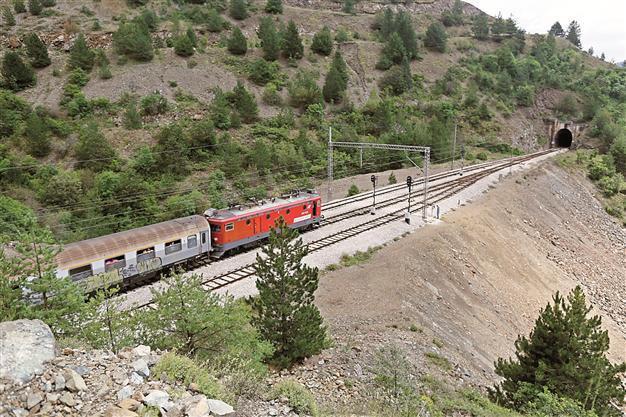Arrests made over Balkan war massacre in joint operation
ISTANBUL

AP Photo
Atifa Memovic last saw her husband two decades ago, but she remembers it as if it were yesterday. It was snowing, and Fikret, a railway worker, was wearing a jeans jacket with winter lining, a gray sweater over a checkered shirt, and on his wrist a Seiko watch. He kissed her and promised to be back on the afternoon train.
He never made it.
On Dec. 5, Serbia and Bosnia carried out a pre-dawn sweep of arrests in the massacre in which Fikret and 18 others were snatched off a train at the height of the Balkans conflict. The Associated Press obtained exclusive investigative documents showing how the two countries - bitter wartime enemies - worked together to crack the case of the Strpci massacre of Feb. 27, 1993, which has come to symbolize a culture of impunity that still shields death squads and their masters today.
The raids captured 15 suspects - five in Serbia and 10 in Bosnia - including the brother of a jailed warlord, ex-militia members and a former Bosnian Serb general who commanded the military in the area.
“We are now on the path to solve the murder that has been hidden for more than 20 years,” said Serbian war crimes prosecutor Bruno Vekaric. “We have to do it for the innocent victims.”
The question now is whether the suspects will point to the men above them who ordered the killings, investigators say. If so, they could implicate some of Serbia’s top former and current officials, who were prominent in the war machine of the president at the time, Slobodan Milosevic. While the Serbian government now acknowledges Strpci as a war crime, the killers are still seen by some in Serbia as war
heroes.
“Many war criminals are still influential in business, politics, police and the army,” said Bosnian State Prosecutor Goran Salihovic, who compared probing war crimes in the Balkans to “reaching into a snake’s nest.”
The Associated Press obtained exclusive investigative documents in the probe, which is backed by the U.N. war crimes tribunal in The Hague, Netherlands. Together with witness testimony, they provide the first detailed account of a tragedy whose wounds fester even today because the killers were not identified and the victims’ families not compensated:
On that day, Fikret Memovic was traveling back home to Prijepolje from the capital, Belgrade, where he had attended a railway workers’ meeting.
His train made an unscheduled stop at the station of Strpci, a remote outpost in eastern Bosnia on the border with Serbia. A group of Bosnian Serb militiamen stormed in to check passenger IDs.
They identified 18 Bosnian Muslims and one Croat through their names and carted them off. The train went on in silence.
The men, clutching their luggage, were herded into a military truck, which took off down a cobblestone road. Shouting and firing guns in the air, the troops took their captives to a village school. Inside the gym, they stripped the men. Then they beat them so hard with rifle butts that blood pooled on the wooden floor and splattered the walls.
Naked and drenched in blood, their hands tied with wire, the men were taken by truck to an empty, half-burnt red brick house near the Drina river. There, they were shot in the back of the head. Two prisoners who tried to escape were hunted down and their throats slashed with bayonets.
The killers shared the loot - cash, gold chains, bracelets, wedding rings, Memovic’s gilded Seiko watch. Clothes and luggage were burned down to the last button in a bonfire that lit up the evening sky.
The bodies were left scattered in and around an abandoned house. The next morning, they were dragged by tractors to the river and dumped in.
The Strpci massacre was part of a conflict that left more than 100,000 people dead and millions displaced. Although all sides have been accused of war crimes, Serbs in Bosnia and Croatia carried out the worst atrocities in an effort to create an ethnically pure territory.
Prosecutors have now identified Milan Lukic, one of the most feared Bosnian Serb warlords of the Balkans wars, as the ringleader of the massacre, which was carefully planned and meticulously executed. Lukic is already serving a life sentence handed down by the U.N. court for separate atrocities against Muslims in Bosnia. In a book written from his prison cell in 2011, Lukic claimed he protected Bosnian Muslims and denied committing any crimes against non-Serbs.
Those arrested in connection with the Strpci massacre include his brother Gojko Lukic; former close associate Boban Indjic; several ex-militia and former Bosnian Serb army general Luka Dragicevic who commanded the military in the border zone. The investigation also tackles the thorny issue of who knew what. Milan Lukic was suspected of being recruited by Serbian state security, which deployed paramilitary units in Serb-controlled areas to eliminate the Bosnian Muslim population, Serbian and Bosnian Serb security officials told AP on condition of anonymity because they were not authorized to discuss the case.
The Bosnian Serb army was financed from Belgrade and controlled by the military and political leadership of Yugoslavia, comprised at the time of Serbia and Montenegro, according to court documents and officials, including former Montenegro President Momir Bulatovic. He denied knowing about the massacre in advance but acknowledged to AP that senior officials, including himself, knew at once when it had been carried out.
